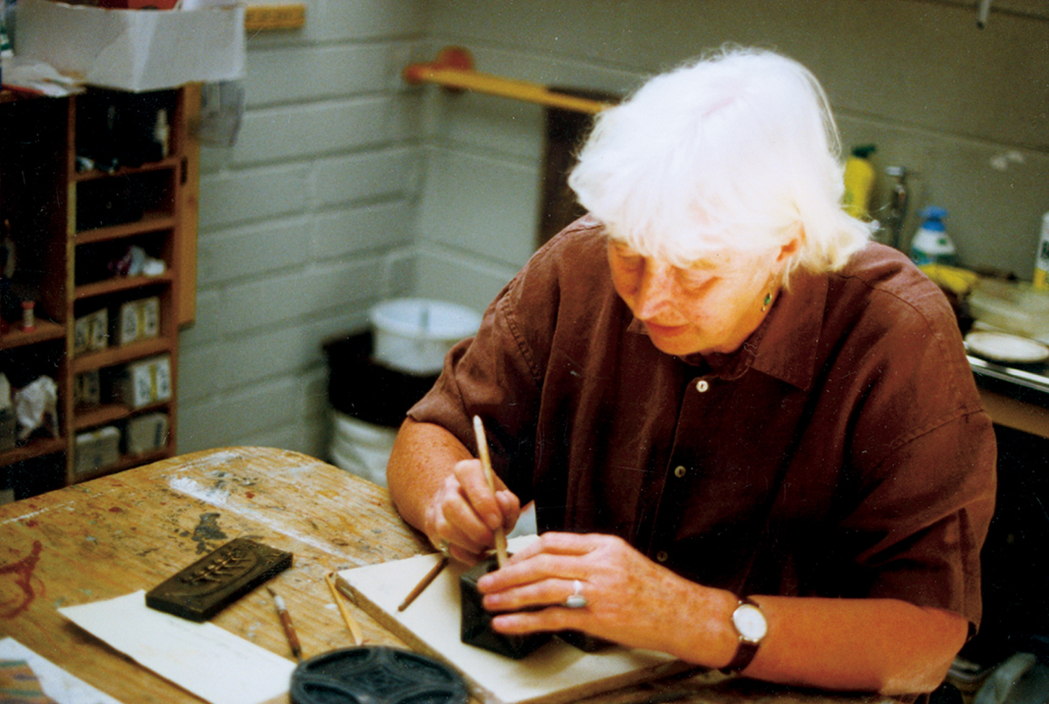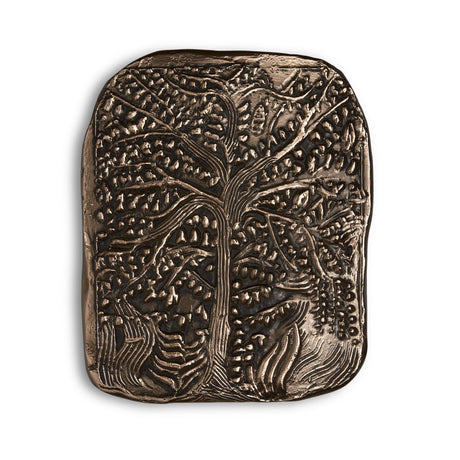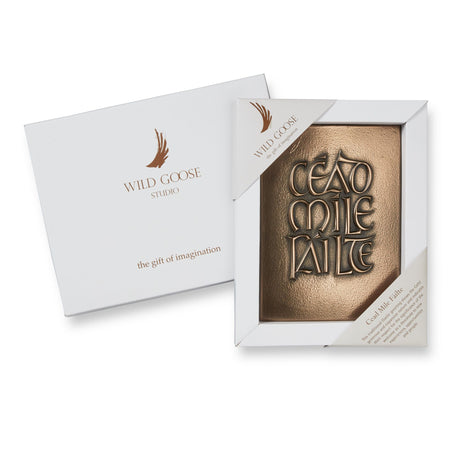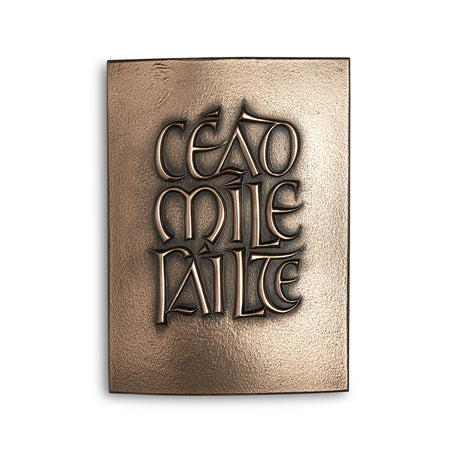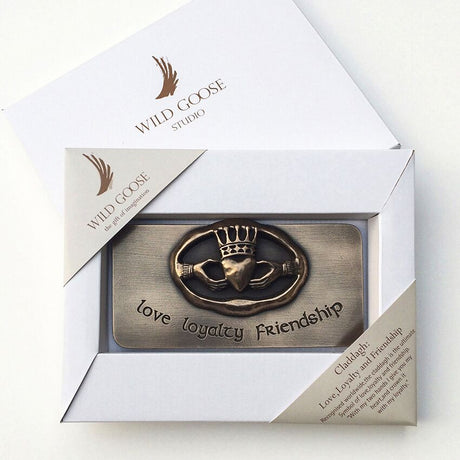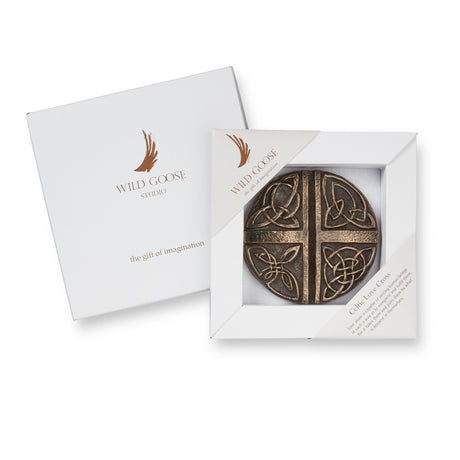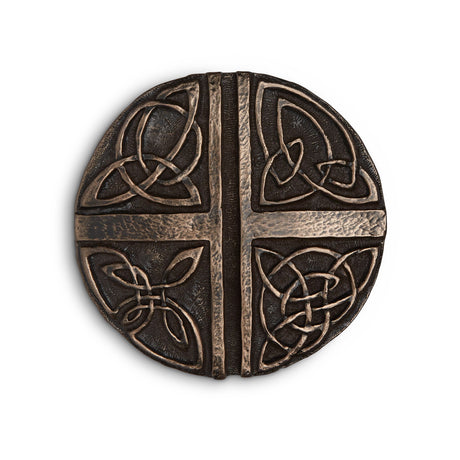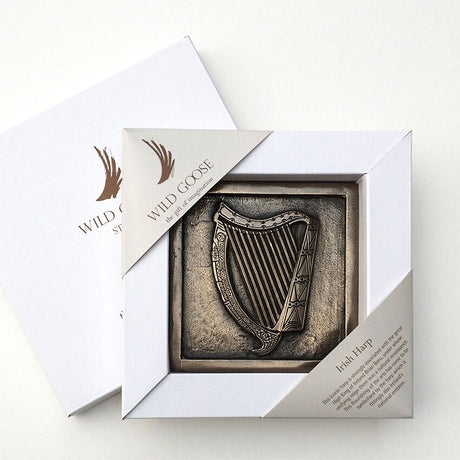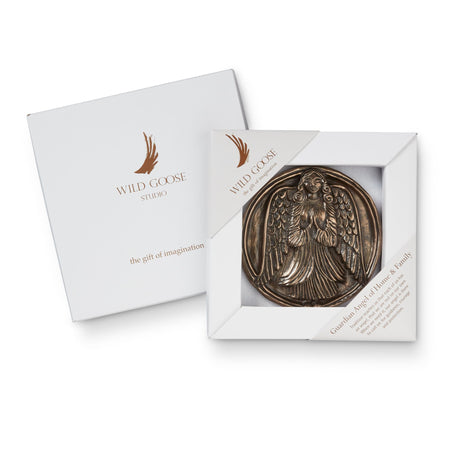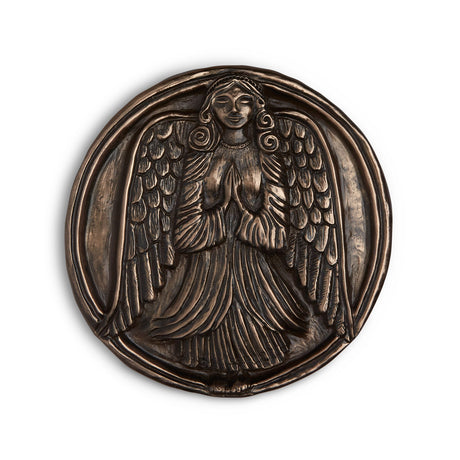In the world of Irish craftsmanship, it’s probably fair to say that few names evoke ideas of legacy and cultural resonance quite like Wild Goose Studio. Established in the late 1960s, this family-run business has been creating handcrafted bronze pieces for decades, each one capturing the essence of Irish history, folklore, and spirituality.
From humble beginnings in a small workshop in Kinsale, County Cork, Wild Goose has grown into a name recognized all across the globe, especially among those who seek a tangible connection to Irish roots.
At the heart of Wild Goose’s success is not just the beauty of their creations but the profound meanings embedded within each piece. The founders, Brian Scott-McCarthy and Kathleen Smyth, were driven by a deep love for Irish heritage and a desire to share it with the world in a way that was both authentic and accessible. What began all those years ago as a small-scale venture catering to a nascent market for Irish souvenirs has now evolved into a brand beloved by many, one which combines the ancient with the contemporary and creates artworks as meaningful as they are beautiful.
In this conversation, the current steward of Wild Goose, Jamie McCarthy-Fisher, talks about the studio's rich history, its unique creative processes, and the deep cultural significance that continues to inspire their work. Jamie also offers insights into how the company has adapted to changing markets while staying true to its core mission: to create art that resonates with people, offering them not just a piece of Ireland but a piece of their own story.
Interview
Real Irish: Hi Jamie, thanks for talking to us today. Can you start by telling us a little about the Wild Goose Studios origin story? How did it come about in the first place?
Jamie McCarthy-Fisher: Thank you, it’s good to be here! Wild Goose has its origins back in the late 60s and early 70s. It started as a family business. It was very much a cottage industry back then, just creating and developing new ways of crafting that hadn't been seen before.
This was during the very early days of Ireland's tourist and souvenir market. When the business began, there were probably only a dozen or so shops around the country showcasing Irish crafts, and there wouldn’t have been a very big overseas market at all. The co-founders, Brian Scott-McCarthy and Kathleen Smyth, combined their love for Irish heritage and craft. Brian had been in marketing, and Kathleen was a radiographer, of all things. They both did it part-time at first — I suppose making things up as they went along, as is the way for all businesses in the early days.
I think what they did was they really drew inspiration from Ireland's built heritage. Celtic high crosses, Newgrange, other landmarks like that. So they produced versions of these artifacts in bronze and cast iron using a cold cast method. Initially, they focused on facsimiles of these historical pieces but over time, their interest extended into what those pieces meant.
And I think that’s really what began to set Wild Goose apart. We’ve always attached as much importance to the meaning behind our products as to the actual image itself.
Real Irish:
Are all of Wild Goose Studio’s products categorized under this umbrella of bronze art, or do you have other product lines?
Jamie McCarthy-Fisher:
We’ve tried other things, but bronze works best. We’re very much identified with it, and it’s central to our brand. Our products tap into a vein of Irish art that dates back to Neolithic times. Especially in America, where customers seek genuine Irish products, bronze resonates because of its historical significance in Irish craftsmanship.
Real Irish:
You mentioned a little about the cast iron, cold cast method. Can you talk a little more about this, and about your production process generally?
Jamie McCarthy-Fisher:
We start with a design, which could be based on something within ancient Irish art, or it could also be something original. We work with artists to create these designs, which are then carved by hand using materials such as stone, clay, plaster, or wood.
Then, from that original work, we create a silicone rubber mold, which becomes the “Master Mold” and allows us to make production molds. Then we pour pure bronze powder into the mold along with a ceramic resin. After it hardens, the piece is polished using mops and polishing machines, similar to those used in jewelry making.
The final step is adding a label on the back with the title, origins, and symbolism of the piece — why you might want to buy it. It’s a piece of decorative art with deep meaning and significance. It’s that marriage of image and meaning which has always added up our most successful products. For example, we’ve seen it so many times when someone comes into shops, and there’s a moment when we know they’re going to buy a product. They pick it up, and look at it, and they might like it, but then they turn it over and look at the back and see the meaning of the piece from the label. That’s when a little bit of magic happens. So all our products are very much about an image, but they’re also about an idea.

From mold to polish
Real Irish:
It’s fair to say that every single piece from Wild Goose goes through skilled hands?
Jamie McCarthy-Fisher:
Oh yes, absolutely. Every part of the process, from the initial hand carving to the final polishing, is done by hand. The polishing is particularly skilled work which brings out the best in each piece.
Real Irish:
What does the business look like today? What kind of team do you have on hand?
Jamie McCarthy-Fisher:
We have about 10 people working in Kinsale, many of whom have been with us for years. For example, Margaret has been with us since the mid-90s. She’s an exceptional polisher and also trains others. Adam Grabski, our general manager, who is originally from Poland, is another key figure.
It’s a funny story, because he came to us by accident actually! He was going for another job, but stopped by the studio and we got talking, and we ended up hiring him. So he was working here and one day he said he wanted to try to make something — a little box with a Claddagh on it, which he could place an engagement ring in for his future wife — and he just asked us could he do it in his spare time. We said, ‘Oh, yeah, fine, whatever”.
And then he created this piece which he duly gave to his intended, who fortunately said yes! But we were looking at what he’d made and thinking, “Oh my God, he really gets how this works and knows how to make these things!”
Adam is incredibly skilled and handles most of our design work now. He’s just one part of our workforce, which really has evolved along with Ireland itself. It’s become much more diverse over the years.

Adam Grabski at work carving in Wild Goose Studios
Real Irish:
Amazing! Could you tell us a little more about Brian and Kathleen and their contribution to the business over the years?
Jamie McCarthy-Fisher:
They’d known each other when they were very young and stayed friends and just wanted to work together. They formed the business out of that enduring relationship. Brian passed away about 20 years ago.
Kathleen sadly passed away just on January 1st 2024 at the age of 93. She stayed very active in the business right until the end. She was fascinating. She was a radiologist by profession, working at Bantry Hospital in west Cork, but she also had a talent for design and trained in jewelry and just had great skill with her hands.
Early on, she did the designs, handled invoicing, and visited customers. After retiring from her formal job, she continued designing for the studio and attended board meetings. She provided invaluable insights, drawing from her experience through good times and lean times.
I think she was glad to pass on doing trade shows when I started! But even into her early 80s, she drove all the way from Bantry to Kinsale for meetings, often bringing her dog with her too. We were all just so fortunate to have her wisdom and presence for so long.

Co-founder Kathleen Smyth at work in the early days of Wild Goose Studios
Real Irish: How do people find out about Wild Goose and your products today?
Jamie McCarthy-Fisher:
Within the Irish market, we’ve been around long enough to be well-known, especially in the retail sector. Over time, we’ve built a loyal customer base, including many people who collect Wild Goose pieces.
The brand itself might not always be recognized, but our products are very familiar to a lot of people, who often pick up a piece and say, “Oh, my Auntie has one of these!”
We’ve always preferred that people discover us organically rather than through flashy marketing. We’ve also started to sponsor a podcast called Into the Mythic, which was started by a couple of friends from Ballydehob, Pol O Colmain, who is deeply rooted in Irish culture, and Leeanne O Donnell, a former RTÉ journalist.
The idea was to explore Irish myths and their relevance today, similar to how Wild Goose takes old things and presents them in new ways. We sponsor it because it aligns with our values, putting something of worth into the world, and we do get people coming to us because of the podcast. It’s part of our marketing approach — to present something valuable and let people come to us.
Real Irish: Are there any core Wild Goose products? Ones that never seem to go out of fashion?
Jamie McCarthy-Fisher:
One that always stands out is the Celtic Cross of Journeys and Meetings. It’s based on a carved stone that was found in Carndonagh in County Donegal. The original piece celebrated the sun and was later adapted with Christian imagery. So we took this and turned it into a piece that speaks about life’s chance meetings and being open to possibilities. It’s a beautiful piece, often given as an engagement or wedding present, and it’s a great example of what Wild Goose does, taking something old and giving it new meaning.
Real Irish: What can people expect when they pick up a Wild Goose piece? Are they quite heavy?
Jamie McCarthy-Fisher:
We strike a balance — they need to feel substantial but not so heavy that they’re difficult to carry or transport. Our ultimate goal is for them to feel valuable without being cumbersome.
Real Irish:
It’s been great to speak with you Jamie. Finally, are there any interesting places where Wild Goose products have ended up?
Jamie McCarthy-Fisher:
This might be a slightly heavy story but it’s something we’re proud of. One Wild Goose piece ended up on one of the the altars of one of the churches that was destroyed in the Rwandan genocide. There were a group of bishops who went to sanctify the church, and they brought one of our pieces with them. Another of our crosses has a peace prayer on it, and that has been brought to many places of conflict, including the Middle East. They have ended up in lots of places around the world, and everywhere they go, I think they carry some of that unique Irish wisdom and meaning.

The Wild Goose team

